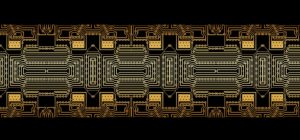
Not all circuits are made on a rigid substrate. Some of them feature a flexible substrate. Known as flexible printed circuits (FPCs), they’ve become increasingly popular in recent years. You can find FPCs in smartphones, tablets, medical devices and countless other electronics. Like all circuits, FPCs consist of conductive pathways. FPCs are simply flexible in the sense that they can bend and flex without breaking.
While all FPCs are flexible, they are available in different types. There are single-layer FPCs, and there are double-layer FPCs. If you’re thinking about buying an FPC, you should learn the differences between single-layer and double-layer FPCs.
What Is a Single-Layer FPC?
A single-layer FPC is a type of flexible, bendable printed circuit that’s constructed of a single layer. Also known as single-sided FPCs, they feature a single substrate. The substrate is the layer on which the conductive pathways are printed. It consists of a flexible material that’s able to bend. All FPCs have a flexible substrate, but single-layer FPCs live up to their namesake by featuring a single substrate or layer.
What Is a Double-Layer FPC?
A double-layer FPC, as you may have guessed, is a type of FPC that features two layers. Rather than a single layer, double-layer FPCs have two layers. Each layer, of course, has its own conductive pathways. Therefore, double-layer FPCs are more complex than single-layer FPCs.
It’s important to note that double-layer FPCs still only have a single substrate. The conductive traces are simply printed on both sides of this substrate. Double-layer FPCs are essentially double-sided FPCs. Each side of the substrate is a separate layer with its conductive pathways.
There are also multilayer FPCs, which feature multiple substrates. Multilayer FPCs are a step above double-layer FPCs. They don’t just feature a single substrate with conductive pathways printed on both sides. Instead, multilayer FPCs feature two or more substrates.
Differences Between Single-Layer and Double-Layer FPCs
Both single-layer and double-layer FPCs are able to bend and flex without breaking. That’s essentially what distinguishes FPCs from rigid printed circuits. Nonetheless, single-layer and double-layer FPCs aren’t the same. Single-layer FPCs feature a single layer on which the conductive pathways are printed, whereas double-layer FPCs feature two layers.
Double-layer FPCs typically cost more than single-layer FPCs. They require more material to produce and involve a more complex production process. With that said, double-layer FPCs are able to provide circuits for complex electronics. Single-layer FPCs are restricted to simpler electronics.
